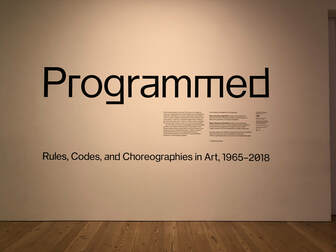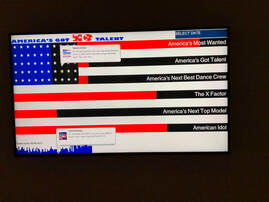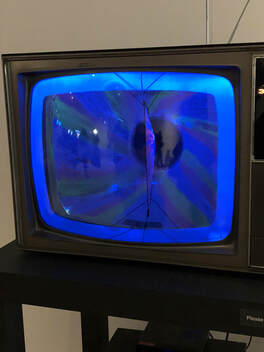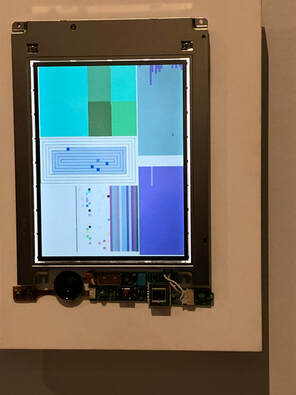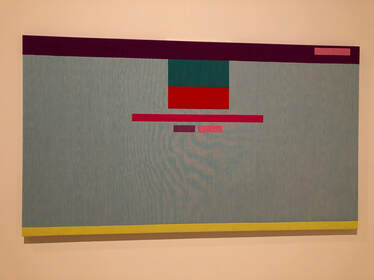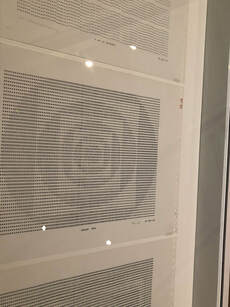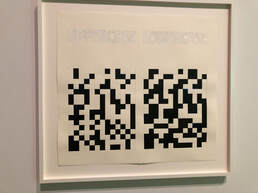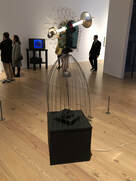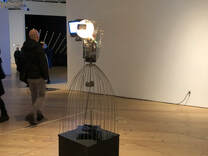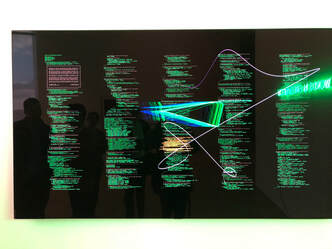|
3/5/2019 0 Comments The "A" in STEAM at the Whitney Museum: Using Technology for Artistic ExpressionBy Robbin Koenig Programmed: Rules, Codes, and Choreographies in Art, 1965-2018 is an exhibit of tech-inspired art at the Whitney Museum in New York City. Created through code, sets of instruction, and algorithms, the artwork is conceptual and computational. The pieces reflect the evolution of technology from the mid-20th century to the present day. Some of the highlights of this exhibit are described below: Jonah Brucker-Cohen and Katherine Moriwaki’s piece, America’s Got No Talent, explores the influence of social media on American pop culture. The project depicts how popular opinion through tweets and retweets impacted the success of American television programs. Two works by Jim Campbell use an array of LEDs as individual units of light to symbolize the pixels in digital images. Ambiguous Icon #5 (Running, Falling) depicts a figure running and falling in a loop. LED lights attached to a resin diffusion screen show a traffic scene in Reconstruction 7 From his Modified Television series, Earl Reiback created sculpture by repositioning the CRT monitor inside of a television and repurposing the phosphorus from the screen to create phosphorescent paint in Thrust. The piece playfully engages the viewer by making the space of the monitor the focal point and teasing our perceptions of how images are projected. Human-Assisted Simulations of a Universal Will to Become (Simulation 9) is a mixed media piece created by Alex Dodge. Dodge’s work is a study in code as a logical creator of form and shape. John F. Simon altered a laptop computer for his software art piece, Color Panel v1.0. The software selects color combinations randomly without repeating the same sequence. The squares and rectangles suggest early modernist geometric abstraction. Abstract Browsing 17 03 05 is a tapestry made with a rapier loom machine and is an abstract representation of the Google Chrome browser. The artist, Rafaël Rozendaal, created a plug-in for Chrome and used it to take multiple screenshots. The screenshots were converted into a file which can be used by a weaving machine. The weaving technique is a nod to 19th-century machine weaving techniques used to create patterns. This work by Frederick Hammersley is from his untitled book that includes a collection of Computer generated drawings on paper. Hammersley used an IBM mainframe in 1969 to create drawings with ART I, a program written in FORTRAN IV. The artwork incorporates the English alphabet, Arabic numerals, and symbols to represent the connection between computer programming languages and human linguistics. Tauba Auerbach’s Binary Uppercase/Lowercase incorporates ink, opaque watercolor, and graphite pencil. The artist translated the English alphabet into binary code. The use of black and white depicts the simplicity of computer languages that use two symbols (0,1) to express complex information. Searcher is an interactive sculpture crafted by pioneering artist, James L. Seawright. It is a proactive and reactive work. Sensors and circuitry emit a beam of light that targets other light sources in the gallery, thereby producing an exchange of signals. This embodies the cybernetics core concept of a feedback loop. CodeProfiles is a piece of digital art created by W. Bradford Paley. The work uses Java to make a statement about its own construction. The actual code is on a screen with instructions to produce 3 symbolic lines. The amber line traces the points where people read code in a linear fashion. The white line shows the insertion of the code and represents that programmers use code to express their thoughts. The green line is an iteration to represent the function of the computer to process the code. Programmed: Rules, Codes, and Choreographies in Art, 1965-2018 runs through April 14, 2019. Free tours of the exhibit are available. The Whitney Museum 99 Gansevoort Street New York, NY 10014 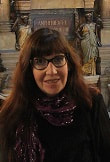 About the Author Robbin Koenig, M.A., M.S. is an educator with an avid interest in technology and science education. She has taught students in prekindergarten through high school. Robbin enjoys volunteer work, exploring the N.Y.C. cultural arts scene, and anything pertaining to wildlife. Comments? Leave them below!
0 Comments
Your comment will be posted after it is approved.
Leave a Reply. |
LIFESTYLE BLOGRead our lifestyle advice, written exclusively for pre-professional women in science and engineering. From advice about fashion, work and family balance, self, wellness, and money, we've got you covered! |
The Scientista Foundation, Inc. All Rights Reserved © 2011-2021 | Based in NY | [email protected]
The Network for Pre-Professional Women in Science and Engineering
The Scientista Foundation is a registered 501(c)(3) -- Donate!
The Network for Pre-Professional Women in Science and Engineering
The Scientista Foundation is a registered 501(c)(3) -- Donate!

